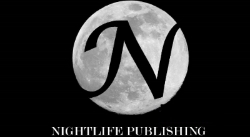Why
Is This Important?
It is helpful for
writers, readers and people in general to understand the elements of seduction in
the same way they benefit from understanding the elements of story. Seduction, in
fiction or reality, is a story with a distinct beginning, middle and end. It
might only be a subplot of a story and it might not have any sexual component
at all, but when it is well written, a seduction can be as satisfying as any
good mystery, horror story or dramatic prose.
Sources
and Methods
I’m
not trying to suggest that I am an expert in seducing women. I have had far
more failures than successes in my life. I have become a student of the
seductive process and this essay is derived from some prominent writing on the subject
including Robert Greene’s Art of
Seduction, Ellen White’s Simply Irresistible,
Erik Von Markovik’s Mystery Method
and Ovid’s Art of Love. Each of these
books approaches the process from a different angle, and this distillation is
not an exhaustive description, but it’s a good primer for understanding the
process.
Please
note, that for our purposes the person doing the seducing is referred to as the
artist and the person being seduced is referred to as the muse. Either person
can be male or female. The time frame is open ended depending on the
circumstances and the people involved.
The
Seductive Process
Part 1 The Approach:
Introduction leads to curiosity
In
this element, the lovers do not know each other, or they know each other but do
not see each other as potential partners yet. The key here is for the artist to
stand out from the rest of the world in a way that captures the muse’s
attention long enough to lead them into the next element.
Part 2 The Lure:
Curiosity leads to attraction
Once
a muse notices the artist, it is essential for them to find reasons to be drawn
to and interact with them. The reasons can be artistic, financial, mental,
sexual, social, spiritual or a combination of any of these depending on the
lovers. The key is for the artist to find out what the muse wants and then
showing that the artist can satisfy those needs. The primary connection here is
intellectual because the lovers are engaging their imagination about what the
affair could be.
Part 3 The Expression:
Attraction leads to affection
At
some point a love affair must feed the intimate needs of the lovers. This element
often refers to sexual expression, but not every love affair includes sex
between the lovers. Every form of expression does include an intense intimate
connection that brings the lovers together while at the same time fulfills a
basic emotional need. The primary connection here is sensual because the lovers
are now engaging on a more physical level.
Part 4 The Bonding:
Affection leads to connection
After
the intense connection created by expression, lovers often feel safer sharing
more of their individuality. This moves the love affair beyond the physical.
Communication between them increases in breadth and intensity. Bonding doesn’t
occur all at once. Often it is a process that occurs over many types of
communication over an extended period of time. The key here is building trust
that is essential for a deeper love affair. The primary connection here is
emotional because both lovers are more vulnerable once the lovers move past the
initial expression.
Part 5 The Comfort:
Connection leads to integration
In
a long term love affair, the lovers become part of each other’s lives. The
initial novelty and uncertainty is replaced with complexity and intimacy. It is
important to realize that comfort does not mean complacency. It does not mean a
reduction in effort or an assumption that the lover will never leave no matter
what you do. If anything, both lovers have the chance and the challenge to
pursue and explore each other in ways that they would never be comfortable with
in the earlier stages. The primary connection here is spiritual because it is
at this point where the lover begins to define themselves in relation to the
loved one.
Seduced
by the Seductive Process
I
have been fascinated by the seductive process ever since my divorce nine years
ago. My two upcoming books both explore the seductive process in different ways.
Smooth Operator focuses on the way
money, ideology, coercion and excitement can be used to seduce, depending on
the muse. A Taste of Honey goes
deeper into the seductive process and how it can be used to deceive both the
muse and the artist. I hope both books will be enlightening about this
fundamental human connection as well as being entertaining.
Stay
tuned.
Have
fun.
Gamal




















